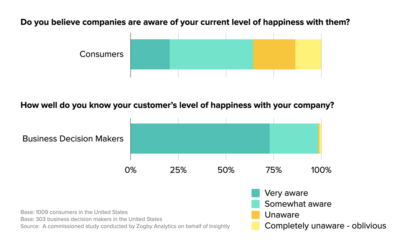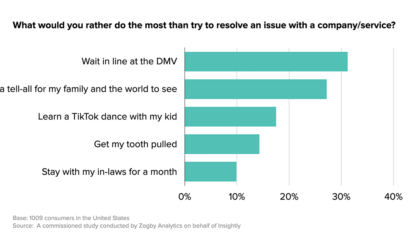Pop quiz! What does it take to deliver effective, coordinated cross-channel experiences in today’s business landscape? If you answered “data,” you’re not alone.
In a recent survey of 1500+ marketing leaders, customer engagement platform Braze found that three of the top four challenges that marketers face related to customer engagement revolve around data:
- Collecting, integrating, and managing data (32% of respondents listed this as a concern)
- Applying data to business decisions (31%)
- Enabling cross-team access to relevant data in a timely and productive fashion (30%)
And while the ability to get, share, and use data from multiple sources is a top challenge, it’s just one of part of a model that Braze has developed to help brands assess the technical maturity of their customer engagement programs. The five other factors in the Customer Engagement Index Tech category include: the technologies used to support and optimize channels, how customer segments are developed, how cross-channel experiences are orchestrated, how performance feedback is used, and how personalization is triggered.

What I really love about Braze’s customer engagement maturity model is that it also includes an equal number of organizational factors. Braze gives top marks in its Teams category to organizations that:
- Develop engagement strategies that align with product and company strategies
- Collaborate continuously
- Continuously experiment with test and learn strategies across departments
- Define success with a company-wide, single definition of success
- Measure success with a variety of both top-line and bottom-line business metrics
- Share ownership of customer engagement programs with cross-functional teams
The message in this model is clear: To effectively reach prospective and current customers across multiple channels, organizations must leverage an ever-growing technology stack. And as they adopt more sophisticated technology, they must also rethink the ways in which they work together every day — or risk not fully realizing the value of their technology investments.
The good news is that organizations are starting to understand this two-fold approach and put it to work: Braze found a 17.5% year-over-year increase in the number of organizations that earned its overall top maturity ranking.
The not-so-great news is that many respondents reported still struggling with the organizational factors in the maturity model. Only 11% of the marketers in Braze’s study said that their customer engagement strategies align with product and company strategies. And just 2% reported having cross-functional teams lead their organizations’ customer engagement programs. In other words, the vast majority of organizations are still taking a siloed approach that will ultimately minimize the potential power of their customer engagement programs.
Second pop quiz! What’s the payoff for moving up this maturity ladder? If you answered “accolades” or “a sense of achievement,” you might be right. But the answer I’m really looking for is one that every organization can take to the bank: higher revenues.
Of the organizations that achieved Braze’s top maturity tier, more than two-thirds reported exceeding their revenue goals. Even better: The pattern persisted across industries and in companies ranging from small- and medium-sized businesses to global enterprises.
The big takeaway: No matter your organization’s shape or size, you can benefit from a more rigorous approach to customer engagement.
Need a little more convincing? Braze also analyzed data from more than 5 billion global user profiles across nearly 800 global brands and found that for each additional channel that’s added to an organization’s messaging mix, customers are 2.8 times more likely to buy — and they make 4.3 times more purchases each.
Want to know how your own organization stacks up on Braze’s customer engagement maturity model? Check out the full 2022 Global Customer Engagement Review for more details.
***
This post was sponsored by Braze.




